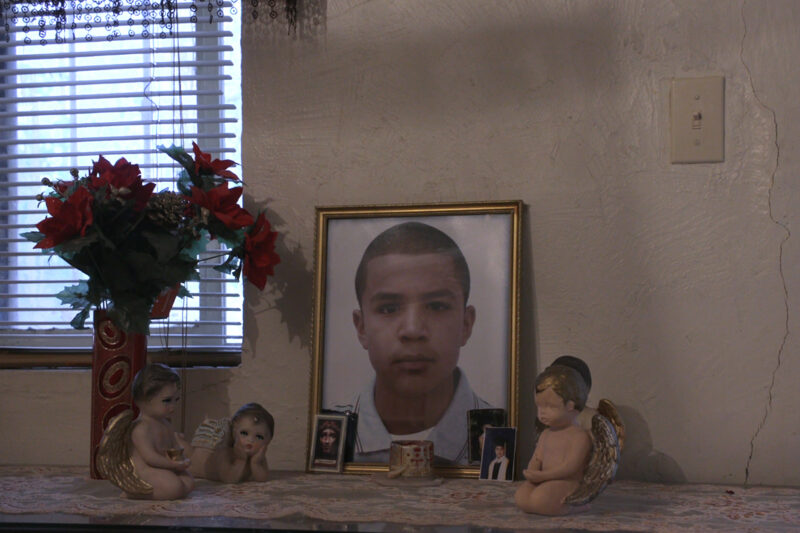
If a U.S. Border Patrol agent uses excessive and unnecessary force to kill a noncitizen in a foreign country, are there consequences under the U.S. Constitution? The answer might seem to be obviously “yes” to most people. Unfortunately, our own government believes the answer is “no.”
On October 10, 2012, José Antonio Elena Rodriguez, a 16-year old boy, was shot and killed on Calle Internacional, a street in his hometown of Nogales, Sonora, Mexico by a U.S. Border Patrol Agent. He was four blocks away from his home.
Calle Internacional runs parallel to a border fence, which separates the United States from Mexico, and is between 20-25 feet in height. The steel fence runs along the top of a 25-foot cliff. That evening, according to Customs and Border Protection (CBP), agents were in pursuit of two suspected smugglers who were attempting to scale the fence back into Mexico from the United States when rocks were thrown from the Mexican side of the border.
In response, Agent Lonnie Swartz aimed his gun through the fence and opened fire anywhere from 14 to 30 times, according to reports.
An autopsy revealed that José Antonio was shot approximately 10 times, and virtually all of the bullets entered his body from behind. He was an unarmed adolescent who liked “cloudy days and chocolate cookies,” as remembered by his mother, Araceli Rodriguez.


%3Ciframe%20allowfullscreen%3D%22%22%20frameborder%3D%220%22%20height%3D%22326%22%20src%3D%22https%3A%2F%2Fwww.youtube.com%2Fembed%2FvhwADdku61M%3Fautoplay%3D1%26version%3D3%22%20thumb%3D%22%2Ffiles%2Fweb17-nogales-thumbnail-580x326.jpg%22%20width%3D%22580%22%3E%3C%2Fiframe%3E
Privacy statement. This embed will serve content from youtube.com.
Today marks five years since the shooting, and there’s still been no justice for the Rodriguez family. José Antonio should be 21 years old. Instead, his mother and siblings regularly walk by his shrine on Calle Internacional, where bullet holes are still pockmarked into the wall. The Rodriguez family, still reeling with loss, remains hopeful that the American judicial system will deliver justice for José Antonio.
In 2014, the American Civil Liberties Union filed a federal lawsuit on behalf of Araceli to vindicate her son’s constitutional rights. At a basic human level, our case challenges the notion that a U.S. border agent can stick a gun through a hole in a fence and shoot at Mexican kids, 20 feet away, with no constitutional consequences. And legally it raises significant questions about whether the U.S. Constitution can be applied extraterritorially. CBP, on behalf of Agent Swartz, asked for the case to be dismissed, arguing that José Antonio was not deprived of constitutional rights because as a Mexican national killed in Mexico, he doesn’t have any. In July 2015, a U.S. District Court of Arizona denied the request to dismiss the case, finding that Jose Antonio “was entitled to protection pursuant to the Fourth Amendment.”
Ultimately, Agent Swartz is an American citizen who is subject to U.S. laws. He opened fire, while in uniform, on U.S. soil, using unnecessary and excessive force in violation of the Fourth and Fifth Amendments despite the fact that “for over thirty years, law enforcement officers have been well-aware that it is unlawful … to use deadly force against an unarmed suspect,” as District Court Judge Collins noted.
“At its heart, this is a case alleging excessive deadly force by a U.S. Border Patrol agent standing on American soil brought before a United States Federal District Court tasked with upholding the United States Constitution,” the judge concluded. CBP has since appealed the ruling, and the case is now before the Ninth Circuit Court of Appeals. If the Ninth Circuit were to rule in favor of the Rodriguez family, it would set a critical precedent that Border Patrol agents cannot kill without constitutional repercussions just because the victim was a national in another country.
In addition in 2015, a federal grand jury indicted Agent Swartz for second-degree murder, the first time in U.S. history that a Border Patrol agent was charged with murder in a cross-border shooting. The trial, which has been pushed back on more than one occasion, is currently set for March.
José Antonio’s death was a tragic event, but not an isolated one. Since 2010, at least 50 people have died as the result of an encounter with U.S. border agents. A 2014 American Immigration Council report examined 809 complaints of alleged abuse lodged against Border Patrol agents and concluded that CBP officials "rarely take action against the alleged perpetrators of abuse." On the occasions when CBP did formally respond to a complaint, 97 percent of the time the response was "No Action Taken."
On January 25, President Trump signed an executive order on immigration enforcement which called for the hiring of 5,000 more Border Patrol agents and 10,000 new ICE officers. CBP is already the nation’s largest federal law enforcement agency and only stands to gain more authority given President Trump’s significant overhaul of immigration enforcement and deportation priorities.
Whether or not we build a wall, there is no Constitution-free zone where border patrol agents can kill civilians. The Border Patrol’s age of impunity must end.
Stay informed
Sign up to be the first to hear about how to take action.
By completing this form, I agree to receive occasional emails per the terms of the ACLU's privacy statement.
By completing this form, I agree to receive occasional emails per the terms of the ACLU's privacy statement.

